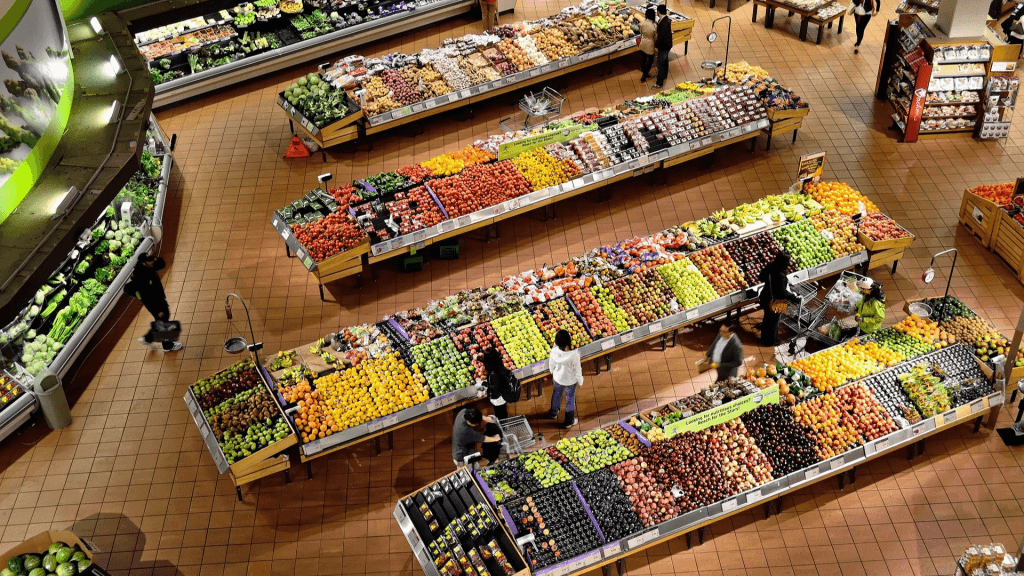What are Online Marketplaces and What’s their Future?

What are Online Marketplaces and What’s their Future?
Online marketplaces have the creation of websites or apps promoting purchases through various sources. Market operators do not have a list of their own, rather, their business involves presenting a list of different people to the customer and thus transacting.
The volume of Online Marketplaces has skyrocketed over the years as they provide true convenience to customers. A department store created will be a marketplace that is online. Since suppliers’ inventory is accessed electronically by users and does not have to be owned by the market before being presented to users, the entire product offered by the suppliers to consumers is not the same as the goods being presented to consumers. The relationship exists with real-time details. This can be a much wider selection than that offered by any shop.
Consumers prefer to employ apps from different retailers. Rather, they tend to download an application that offers a product range comparable to that offered by a single store. This makes the market extremely attractive.
There are some downsides to the market as well. As goods are being offered by many vendors, the detail about them often cannot be compared and the sending speed of the vendors is not constant. This can surprise consumers in a negative way. Ensuring the smooth operation of a market is meant to involve multiple suppliers at the same time and present it smoothly to consumers which is difficult to fulfill.
Vertical
Vertical marketplaces ask for goods from different sources, but they are all one of a kind. For example, some sell only jewelry and related accessories. The site does the important job of guaranteeing the genius and since jewelry is such a big part of a big-ticket product, it is a major value-adder. When entered on the portal, TrueFacet inserts the value by authenticating the reality of an item by entering some specific marker of each bit.
Horizontal
A wide variety of products are found in the horizontal market, although they all exchange one feature. For example, Panzo, another proponent in Shop, constitutes a market for fans. Chad Bilimer, CEO of Penzo, says that ‘belly dancer enthusiasts behave only as Porsche enthusiasts’. By presenting society, data, and infrastructure, Bilimer believes that Panzo will direct traffic to individuals to follow their passion for simultaneous purchase and incorporation from each other.
The Global
The global market reverses everything. Their passion is their assortment of products. On eBay, Seller Experience VP, Bob Coupons, told ShopTalk, you scale you get a transparent price, ‘if items are bought and sold adequately, users can see what is reasonably priced and they feel they are getting reasonable prices.
What is the motivational market?

Currently, in almost all types of eCommerce, Prime Mover is Amazon.com. There is nothing as inspiring as a big competitor with practically limitless resources, technical capability, and capability. Amazon constitutes a mixed market, offering its individual products and to other firms while providing buyers and sellers a platform to transact on Amazon either by themselves or with support from a variety of Amazon.
There are also various different hybrid marketplaces. Many companies, large and small, currently, like Walmart, are the second-largest eCommerce site within the country, according to ComScore, allowing users to offer their personal items in markets that are mushrooming across multiple eCommerce portals Huh. If they function well, the marketplace becomes an affiliate with eCommerce portals to bring in more traffic, confirming more reasons for consumers to remain on the site for no reason.
As a drawback to the lack of department stores, marketplaces are among the areas that many-brand retailers are replacing. There is currently a barrage of marketers. Ian Friedman, co-head of Goldman Sachs Investment Partners, believes that the market must effectively achieve 3 things to thrive:
- Less friction in selling as well as selling to generate sufficient liquidity on both sides of the market
- Generate a greater degree of loyalty and openness to foster participation, and
- Design both dynamic and responsive mechanisms to deal with burning problems arising between market partners.
It is popular within the retail sector to explore the latest retail ideas and enhance the current way of the market. The prevailing trend is that with the passage of time, a shiver occurs, and simply survives the best. Ultimately the entire online marketplace will need to assure its retaining power by offering efficiency and distinctive value to consumers. Unsuccessful people will pack the same missing market ratio as department stores and eventually those markets will disappear.
Online Marketplace – Their Future
Think about making $ 37 billion and $ 683 million a year revenue. Traditional knowledge indicates that you need a large amount of inventory to sell that item. However, when GrubHub and Uber mentioned those numbers during 2017, they did not receive any single car or restaurant. They are just two examples of companies that have overturned the traditional market by groundbreaking gig economy business prototypes.
An online marketplace constitutes a digital space, where the two ends of a transaction are connected through technology and the officer or seller has no inventory, rather, they just support the transaction. Firms such as GrubHub and Uber clearly show that business is flourishing. The 75 largest online marketplaces grew by 30% during 2017, accounting for nearly half of the entire global online shopping.
Everything is available online
Online marketplaces will serve as the starting point for almost all communications consumers and businesses with goods and services. Consumers have demonstrated that they will buy and buy almost anything online, and marketplaces are growing to offer them more options and flexibility. Traditional businesses will adjust and tap the online marketplace to take their products and services to market. More and more numbers will come to view the marketplace as a fast avenue for the latest revenue streams or as an advancement of their current distribution model.
Maybe everything lies in one app

Markets that flourish will have speed and mobility at the root. Most marketplaces will prioritize apps, or rely only on apps. When you are the only app moving towards the future, you will start seeing past marketplace businesses looking at your website. There are already many who make their presence felt only by the app (eg, Uber, grocery delivery services).
Niche Is Vital
online marketplaces will still be more vertical and hyper-focused where they exist. While it is safe to assume that marketplaces will continue to grow, to maintain that they must focus on providing an incredible customer experience and provide value on each and all transactions.
Clickthrough will sign traditional e for standardized agreements. Online marketplaces will continue to adopt clickthrough agreements as there is no better way to reduce legal risk without affecting conversions. Marketplaces are engaging new customers and providers at an accelerated rate, and Clickthrough presents a scalable, organized, and frictionless experience that minimizes their risk and liability risk.
Conclusions
These predictions are closer to reality every day. A growing number of companies are joining the online marketplace space, apps are achieving standards, and a large number of business leaders are realizing the value of clickthrough agreements. We can just imagine the scenario five years from now.





